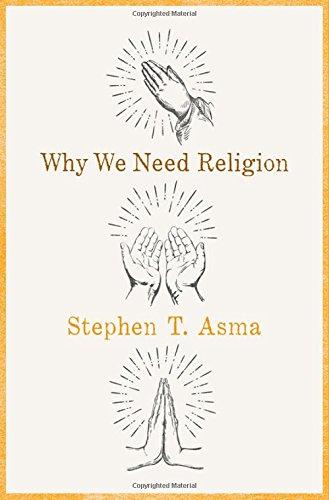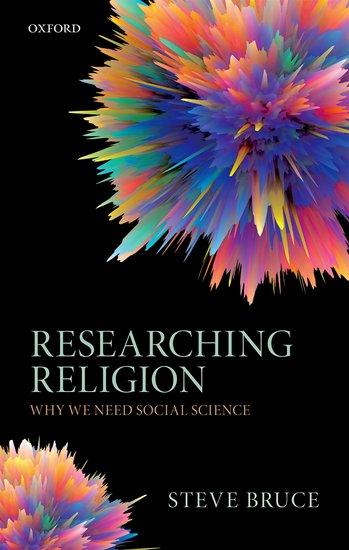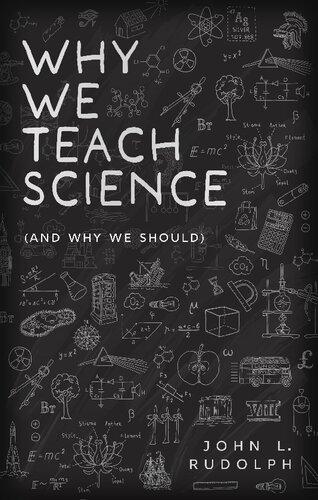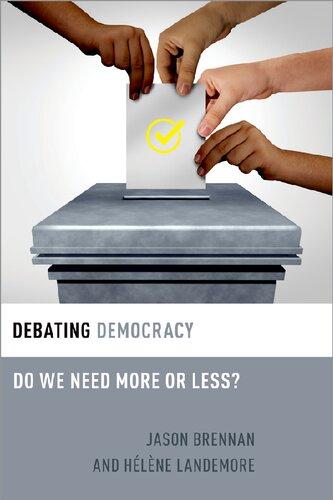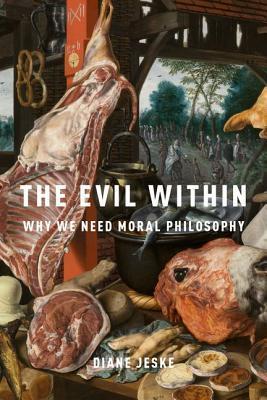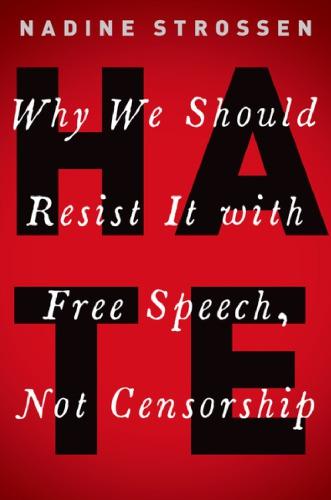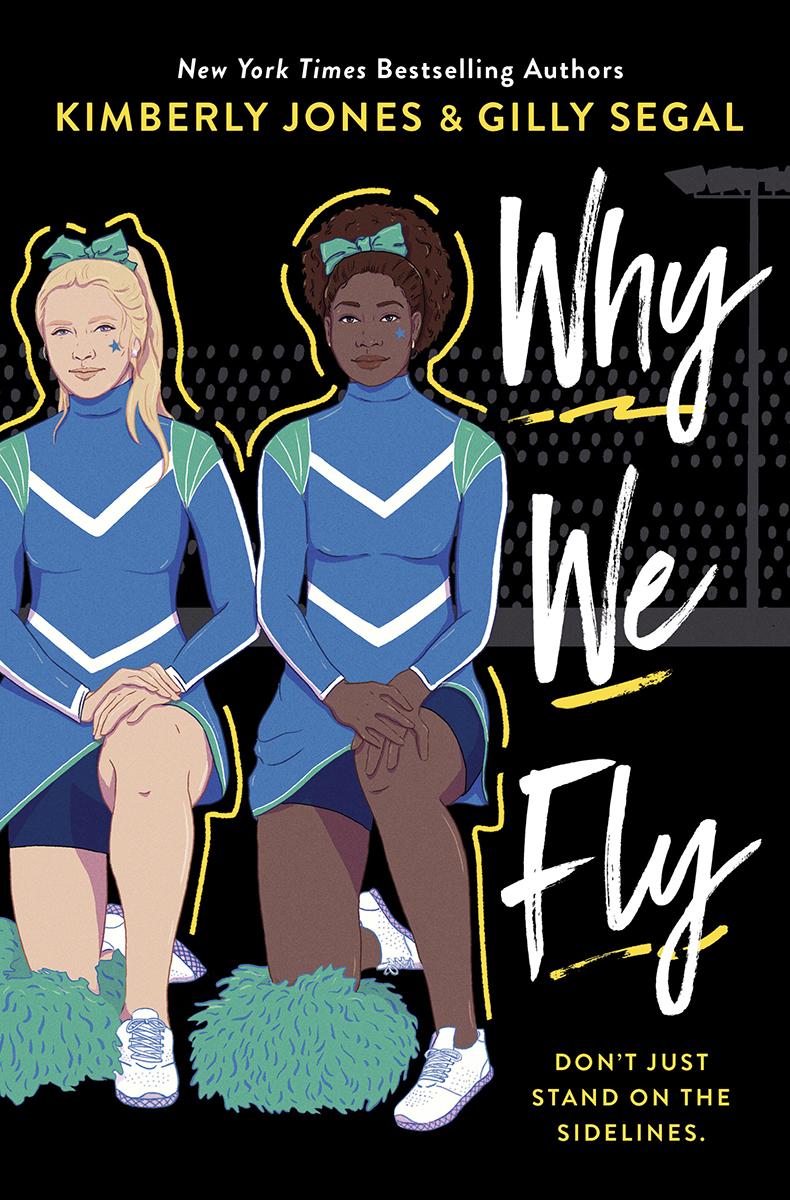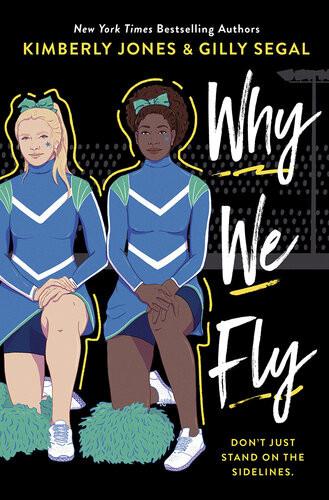Not Just for the Boys: Why We Need More Women in Science Athene Donald Visit to download the full and correct content document: https://ebookmass.com/product/not-just-for-the-boys-why-we-need-more-women-in-s cience-athene-donald/
More products digital (pdf, epub, mobi) instant download maybe you interests ...
Why We Need Religion Stephen T. Asma
https://ebookmass.com/product/why-we-need-religion-stephen-tasma/
Researching Religion: Why We Need Social Science Steve
Bruce
https://ebookmass.com/product/researching-religion-why-we-needsocial-science-steve-bruce/
Why We Teach Science (and Why We Should) John L.
Rudolph https://ebookmass.com/product/why-we-teach-science-and-why-weshould-john-l-rudolph/
Debating Democracy: Do We Need More or Less? Jason
Brennan
https://ebookmass.com/product/debating-democracy-do-we-need-moreor-less-jason-brennan/
The Evil Within: Why We Need Moral Philosophy 1st Edition
Diane Jeske
https://ebookmass.com/product/the-evil-within-why-we-need-moralphilosophy-1st-edition-diane-jeske/
HATE: Why We Should Resist It with Free Speech, Not Censorship Nadine Strossen
https://ebookmass.com/product/hate-why-we-should-resist-it-withfree-speech-not-censorship-nadine-strossen/
Why We Forget and How To Remember Better: The Science Behind Memory Andrew E. Budson
https://ebookmass.com/product/why-we-forget-and-how-to-rememberbetter-the-science-behind-memory-andrew-e-budson/
Why We Fly Kimberly Jones
https://ebookmass.com/product/why-we-fly-kimberly-jones/
Why We Fly Kimberly Jones
https://ebookmass.com/product/why-we-fly-kimberly-jones-2/
NOTJUSTFORTHEBOYS A T H E N E D O N A L D NOTJUSTFOR THEBOYS WhyWeNeedMoreWomen inScience GreatClarendonStreet,Oxford,OX26DP, UnitedKingdom
OxfordUniversityPressisadepartmentoftheUniversityofOxford. ItfurtherstheUniversity’sobjectiveofexcellenceinresearch,scholarship, andeducationbypublishingworldwide.Oxfordisaregisteredtrademarkof OxfordUniversityPressintheUKandincertainothercountries ©AtheneDonald2023
Themoralrightsoftheauthorhavebeenasserted Allrightsreserved.Nopartofthispublicationmaybereproduced,storedin aretrievalsystem,ortransmitted,inanyformorbyanymeans,withoutthe priorpermissioninwritingofOxfordUniversityPress,orasexpresslypermitted bylaw,bylicenceorundertermsagreedwiththeappropriatereprographics rightsorganization.Enquiriesconcerningreproductionoutsidethescopeofthe aboveshouldbesenttotheRightsDepartment,OxfordUniversityPress,atthe addressabove
Youmustnotcirculatethisworkinanyotherform andyoumustimposethissameconditiononanyacquirer
PublishedintheUnitedStatesofAmericabyOxfordUniversityPress 198MadisonAvenue,NewYork,NY10016,UnitedStatesofAmerica BritishLibraryCataloguinginPublicationData Dataavailable
LibraryofCongressControlNumber:2023930747
ISBN978–0–19–289340–6
DOI:10.1093/oso/9780192893406.001.0001
PrintedandboundintheUKby ClaysLtd,ElcografS.p.A.
LinkstothirdpartywebsitesareprovidedbyOxfordingoodfaithand forinformationonly.Oxforddisclaimsanyresponsibilityforthematerials containedinanythirdpartywebsitereferencedinthiswork.
Tomygranddaughters PREFACE Thisbookiswrittenforanyonewhoiswonderingwhy,in spiteofdecadesofefforttopromotechange,thenumbersof womenpursuingcareersinthephysicalsciencesandengineering stillremainsmallandthenumbersofwomenreachingthetop ofbiomedicalresearcharenotatallinproportiontothosewho startout.Despitebarriersappearingtohavebeenremoved,less visiblehurdlesremaintotripupmanywomen.
Someoftheanswerstothesequestionsaresubtle,butmanyare not.Somehowsocietyisstillstuckinatimewarp,wherewomen areexpectednottogettheirhandsdirtyonaconstructionsite orlabouringatalabbench.Thisviewappearstocontinueto hold,despitemanyrecentexamplesofwomenmakingadifference,somethingparticularlynoticeableduringtheCovid-19 pandemic,wheretheroleofwomenindevelopingvaccinesand contributingtopublichealthhasbeensoprominent.Suchviews ofwhatwomencanandshoulddoareoutdatedandneedto change,ifsocietyistobenefitfromalltheyhavetoofferinthe scientificdomain.
Wemayhaveprogressedbeyondthe19thcenturybeliefthat tacklingcomplexmathematicswoulddamageawoman’sreproductivesystem,andthemid-20thcenturyviewleadingtoa Princetongraduateremarking,asthelong-establishedinstitution consideredadmittingwomen, KeeptheDamnedWomenOut. 1 Yetthe
repercussionsofthishistorycanstillbefeltacrosstheso-called STEM(Science,Technology,Engineering,andMathematics)2 subjects,wherewomenremaininaverynoticeableminority.
Thisbookexplorestheobstaclesthatwomenfaceinstudying andpractisingthesedifferentscientificandtechnicaldisciplines today,andhowthingscanbeimproved.Itisnotabookwritten solelyforwomen,tohelpthemunderstandthehurdlestheyface ormightfaceiftheyentertheSTEMprofessions.Cruciallyitisalso writtenformentoreadandconsidertheirownactions:howthese maybeinfluencingthewomentheyworkwith,whattheymight dotoimprovetheworkenvironmentforall,andhowtheypersonallycansupportwomen’sprogression.Furthermore,itisnot abookwrittensolelyforthepractisingorwould-bescientist,but alsoforparents,policy-makers,andemployers,whosedecisions impactonhowgirlsmakedisciplinarychoicesfromanearlyage andwhatatmospheretheysubsequentlyencounteratuniversity andintheworkforce.
Ihopethenextgenerationofwould-befemalescientistsdon’t continuetofacethesameobstaclesmanydotoday.Aroundthe world,wecandobetter.Societywillbethestrongerforitifwewelcomethesewomenandencouragethemintothescientificworld. Diversityimprovesoutcomes,asbusinesshasbeguntorecognize. Itistimeforourlaboratories,schools,andindustriestodothe sameandensurethattheirworkforcereflectsthisreality.
ACKNOWLEDGEMENTS ThisbookisaboutatopicthatIhavehadplentyofopportunity tothinkabout,bothexperientiallyandthroughmyroleson differentcommitteesandindifferentorganizations.Duringthe courseofthiswork,Ihaveinteractedwithmanywonderfuland helpfulpeoplewhohavetaughtmesomuch.Toallofyou,thank you.Ican’tnameyoueachindividually,butIwillhighlightsome whohavebeenparticularlystimulating,challenging,and/orinformative.So,thankyoutoJocelynBellBurnell,BethBromley,Julia Buckingham,RuthCameron,JaneClarke,HannahDevlin,Sigrid Fisher,MarkGeoghegan,ValGibson,HelenGleeson,DotGriffiths,VivienGruar,EstherHaines,JuliaHiggins,JennyHigham, SheilaMacNeil,NancyLanePerham,HilaryLappin-Scott,OttolineLeyser,MiriamLynn,MargaretMackie,RachelOliver,Rachel O’Reilly,DavidPeet,GwenReilly,TonyRyan,JeremySanders,Jim Smith,GwynethStallard,BarbaraStocking,SarahTeichmann, PaulWalton,TomWelton,IsabelleVernos,LesleyYellowlees,and AndrewWebber.IwouldalsoliketothankCatherineSutherland, whointroducedmetoMaryAstellandallowedmetoexamine someofherbooksandannotationsandsetmestraightonwhatI wrote.
Iamdeeplygratefultoallwhonotonlyhavediscussedthese matterswithmebutlookedatallorpartsofthebook,fromtheir verydifferentperspectives,includingMelindaDuer,PatriciaFara,
ACKNOWLEDGEMENTS UtaFrith,MarkGoldie,RichardJones,MargaretMackie,GinaRippon,andMegStaff.IamalsodeeplygratefultomyeditorLatha MenonatOUPandtheiranonymousreaderswhoallhelpedthe booktogainpolishandfocus.Finally,Ioweanenormousdebt tomyhusbandMatthew,whohaspatientlylistenedtome—and sometimesnotquitesopatiently—talkaboutthistopicrepeatedlyovertheyears,aswellasconstantlyprofferingemotionaland practicalsupportthroughoutourlong-lastingpartnership.
CHAPTER1 WHAT’STHEPROBLEM? Istillmissthebuzzofhands-onresearchasanexperimental physicist.Backinthedaysbeforeeverythingbecamedigital,I wouldspendhourssittinginthedark,staringatthescreenofan electronmicroscope.Maybethisisn’teveryone’sideaoffun,but Ispentasignificantpartofmyearly20sdoingjustthat,fullof excitementaboutwhatnewinsightseachsessionontheelectron microscopemightbring.Thereisasenseofwonderinstaringat somethingwhichhasneverbeenseenbyanyonepreviously.It isn’tliketheaestheticcontemplationofRenaissanceArt:it’snot aboutinherentbeauty.Thewonderarisesfromtheunknown, thepreviouslyunknowable,whichmaysuddenlyopenup.Orit maynot.Foreverysuccessfulhouronthemicroscopetherewill beatleastasmany,sometimestentimesasmany,whennothing goesquiterightandthere’sessentiallynothingtosee.That’s whatresearchislike:anexhilarating,exhaustingrollercoasterof emotions.
Theperiodofmyresearchlifethatwasmostheady,and pumpedtheadrenalineroundmybodyfastest,occurredwhenI wasayoungresearcherintheUSA.IwasinupstateNewYork, atCornellUniversity,whereIwasworkingasapostdoctoral researcher(‘postdoc’).Iamatheartamicroscopist;Ihavespent manyhoursstaring—withjoy,frustration,andnotinfrequent
boredom—downmicroscopes.Whenmyresearchisgoing well,everynewsampleIputinfrontofmyeyesIlookatwith hopeandexcitement,foreverwonderingwhatnewfeatureIam likelytoseeandhowitwillfitintothejigsawthatIamtrying toconstructoffacts,theories,mypriorobservations,andother people’sevidence.Theadrenalinhitisoverwhelmingwhenthings work.Unfortunately,manyperiodsofresearchareanythingbut likethat,butthememoryofthatbuzzremainsasapermanent feel-goodmoment.
Thisperiodthatproducedthemostsustainedresearch‘high’ wasmysecondpostdoctoralappointment.Afteraveryunproductivecoupleofyears,Ichangedfields—fromresearchingmetalstoplastics—andalsomyprofessor,butstuckwithworking withmicroscopes,mainlyelectronmicroscopes.Iwaslucky.Iwas abletoovercomethehurdlethatmyfirst,extremelyunsuccessful postdocposed,andcontinuearesearchcareerinacademia.Many researchersdonothavethatluck.Wasthereagenderangleinthat firstfailure?Quitepossibly,sinceIwasthefirstwomantoholda postdocintheentiredepartment(whichwaspartoftheEngineeringFaculty),butIcan’tbesure.Manywomenmaybemuchmore certainofgenderplayingaroleintheirdiscomfortatanystagein theircareers,astatementastrueinscienceasinanyother.Whatis differentisthatthenumberofwomenwhoevenstartacourseat universityinSTEM(Iwillfrequentlyuse‘science’looselytocover allthedifferentSTEMdisciplinesforconvenience)istypicallywell below50%,theexceptionbeinginthebiologicalsciences,sothat losseshigherupthepipelinehaveastarkeffect.
Whydowomennotprosperinthescientificworkforce?Why aregirlsdiscouragedfromeverembarkingonscienceatuniversityinthefirstplace,letalonebeyond?Thisbookwilllookback
brieflyathow,historically,societyhasalwaysexcludedwomen fromthescientificsphereanddiscourse,andhowfarwehave come.Itwillexploresocietalexpectationsduringbothchildhood andworkinglife.Itwillbringtogetherquantitativeevidencefrom someofthelateststudiesofthesystemicdisadvantagesunder whichwomenoperateinacademiaaroundtheworldwiththe developingscienceofhowourbrainsare—andmoreimportantly aren’t—gendered.Itwilllookatthesocietalchallengeswomen intheworkforcefaceandhowtheyplayoutwithinthescientific sphere.Onlyifweunderstandthepresentcanwerealistically takestepstoimprovethefuture.
Thebookwilldiscusshowscientificresearchisdoneinpractice,inordertodispelsomecommonmyths.Mythssuchasthat scienceisnotcreativeorthatitisdonebyalonegeniusinanivory tower.Modernscienceisnotlikethatatall,andthesemythscan beveryoff-puttingtomanysectionsofthepopulation.Abetter appreciationofthecollaborative,creative,andmulti-disciplinary natureofscienceislikelytoleadtoitsappealtoafarwiderswathe ofpeople,maybeespeciallytowomen,whoareoftenbroughtup tobeteam-players.
Therealityis,however,thatmenandwomentypicallyexperiencetheworkplacedifferentlyastheyprogressalongtheirscientificcareerpaths,withwomenencounteringproblemsthataren’t alwaysevenvisibletomen.Letmegiveyouonestrikingexample ofnegativityexperiencedbyawomaninscience,someonerightat thetopoftheirgame:theGermanNobelPrizewinnerChristiane Nüsslein-Volhard.Youmightthink,ifyou’vejustbeenawarded theNobelPrizeinoneofthesciences,thattheworldwillwant tocelebratewithyou.Well,maybenot.Not,atleast,ifyou’rea
woman.SosaidNüsslein-Volhardinaninterviewafewyearsback withthenewspaper, derSpiegel:
AfterawhileyougetusedtobeingaNobelPrizelaureate.Butsomecolleagues couldn'tbearthatIgottheprize.Irememberthedaythenewscameout:I calledthemanagingdirectoroftheinstituteandsaid:IgottheNobelPrize andwehavetohaveaparty.1
Theinterviewerfollowedupwith‘Howdidhereact?’towhichshe replied:
Hesaid:‘Canyoupleaseorganizethechampagneyourself?Ihavenotimeto takecareofthat.’
Awomanisexpectedtodothe‘housekeeping’,somethingwewill seemoreoflaterinthebook.
Asafemalescientistyoudon’thavetobeaNobelPrizewinner torecognizethathowmenreacttowomen’ssuccessisnotnecessarilyidenticaltotheirresponsetomen’sachievements.Ihad acolleaguewho,onbeingelectedtotheRoyalSociety(theUK’s nationalacademyofscience),wastoldherdepartmentwouldnot becelebratingthisbecauseit‘wasn’therturn’.Inmycase,Ihad aprofessorwritetomeonmyownelectionsayinginadistinctly barbedtone‘youneverknowhowclevercolleaguesarearoundyouuntil theymakeFRS’.
Atjuniorlevels,too,womenscientistscanexperiencetheequivalentsortofnegativity.AsNüsslein-Volhardputsitinthesame interview: MyPhDsupervisorwasverycharmingandIcertainlythoughthecouldbe amentorandguideme.Buthecouldn'tbearthatastudentwasbetterthan him.Intheend,hetriedtogetinmyway.I'mstillbitteraboutittoday.
WHAT’STHEPROBLEM? Althoughshewasastudentmanyyearsago,Ifearsomewomen wouldstillhavesupervisorswhoreactthesameway.Itisnotamillionmilesawayfromthechallengefacedbyfemaleleaders,such asHillaryClintonduringher2008and2012electioncampaigns: likeabilityversuscompetence.Thisisnotatensionthatmen,in anysphere,seemtobeupagainst.
‘Theworldneedsscienceandscienceneedswomen’,saystheL’Oreal strapline.Theyare,intheirownway,tryingtoremedysomeofthe problemsbyprovidingfundingforgiftedfemalescientistsfrom allroundtheworld,buttheycanonlyscratchatthesurfaceofthe problemsthatstillbesetwomenprogressing.‘9%isnotenough’, headlinestheBritishInstituteofEngineeringandTechnology’s campaignforgenderequality,reflectingtheextremepaucityof womenenteringtheengineeringprofession.Amere9%!Why doesitmatter?Whyshould you carethatwomenfallbythe waysideateverystageofascientificcareer?
Firstly,becauseitmightbeyourtalenteddaughter,granddaughter,god-daughter,niece,neighbour’sdaughter…itmight bethenextMarieSkłodowskaCurieorRosalindFranklinwho getsputofforactivelyshuntedout.Theirbrilliancemayneverbe abletodeliverifat15anunthinkingteacherimpliesthatengineeringisnotverylady-likeandwouldn’ttheyratherstudyEnglish literatureatuniversity?Thedaysofrecommendingasecretarial courseforthesmartgirlmaybelongpast,butsimilarstereotypingmaystilloccuraboutcareeroptions,directlyorindirectly. Ifateacherimplicitlybelievesgirlsarelessgoodatmaths,for instance,theywillunderperformandtherebyrulethemselves outofcareertracksrequiringmathsskills.2 Schoolchildrenwho arenotprovidedwithappropriatecareersadvicearenotlikelyto knowtheymightwanttoenteraspecificsector.Construction,
NOTJUSTFORTHEBOYS forinstance,intheUKatleast,isoverwhelminglymale.Ifa2017 surveybyamajorconstructioncompany3 isrepresentative,this trendislikelytocontinue:itfoundthat,ofchildrenthathadbeen offeredcareersadvice,40%ofboysweretoldaboutconstruction, comparedwithonly29%ofgirls.
Secondly,oursocietygloballyisfacingarangeofexistential crises,includingclimatechange,thespreadofdiseasesfrom EbolatoCovid-19,andfoodsecurity,andtheirsolutionsallhave scienceandscientistssittingfirmlyattheirheart.We,thepublic, areoftentoldweneedmorescientiststotackletheseproblems,to innovate,tostimulatetheeconomyandtopushupproductivity, yetsocietiesequallyoftenconveymessagesthatdiscouragegirls fromthinkingaboutscienceasacareer.Wearepotentiallylosing halfourtalentifweletthisoccur,toeveryone’sdetriment.Asthe MexicanbiologistEstherOrozco,theL’Oreal/UNESCOLaureate 2006forLatinAmericaandtheCaribbean,putit:‘Whenatalented womanisledawayfromscience,humanityloseshalfofitstalentandmuch moreofitssensitivityandintuition’.4
Whoistoprovidetheinnovationandinsighttoovercomethese massiveobstaclestolifeasweknowit,whereverwemaylive?We cannotaffordtokeep(oractivelydrive)womenoutofscienceif theglobalsolutionstotheproblemswefacearetobeconfronted andovercome.It’snotsimplythatweneedmorescientistsand technologists,althoughwedo;itisthatweneeddifferentwaysof thinkingabouttheproblems.Justasinabusinesscontext,where thediversityofteamsisknowntoleadtomoreinnovativesolutionsyieldingultimatelybiggerprofits,sodiversityofapproaches insciencecanyieldnovelinsightandoriginality.Diversitycovers allkindsofstrands,butwhatitmostcertainlydoesnotmeanisa grouplookingjustliketheirbossorprofessor.
WHAT’STHEPROBLEM? Genderisjustoneformofdiversitybut,giventhatwomen areapproximatelyhalfthepopulation,itmakessensetoworry ifasubstantialproportionofthathalfarelosttothepushfor innovationandoriginalityduetothewayoursocietyworks. Theyare,ofcourse,nottheonlypartofthepopulationwhich hassystematicallybeendisadvantagedovertheyears.Diversityin ourresearchapproachesmeansencouragingallthesesegments ofsocietyandmakingsuretheyarewelcomedintothescientific fold.Ethnicbackground,sexualorientation,anddisabilityallmay leadtosignificantdisadvantagesarisingfromculturalattitudes whichweneedtorootoutofourlabsasacrossoursociety; intersectionalitywillmakeeveryproblemworse.However,this book’sprimaryfocuswillremainontheissueofwomen,thearea Iammostfamiliarwith,whilerecognizingtheimportanceof theserelatedissues.
Myaiminthisbookistobringtogetherrecentevidencefrom awiderangeofdifferentspheres,includingneuroscienceandthe socialsciences,toconstructacoherentandintegratedpictureof thecurrentsituationforwomeninscience.Anecdotesandquotes frompractitionersofscience,bothmaleandfemale,abouthow theyapproachtheirsciencewillservetoillustratesomeofthe hurdlesandhowtheycanandshouldbetackled.Inmyprevious roleastheUniversityofCambridge’sGenderEqualityChampion, Ilearnedanenormousamountaboutthespecificissuesfacing womeninmyownuniversity.5 Andhavinginterviewedmany seniorscientistsfromdifferentbackgrounds,formallyandoften informally,6 Ihaveplentifulexamples,toaddtomyownexperiences,ofhowdifferentwomenhavefaceduptothechallenges andwhetherornottheirapproacheshaveworked.
NOTJUSTFORTHEBOYS Eventhemostsuccessfulscientisthassetbacks,butthesecan feelparticularlypainfuliftheyarisebecauseofgenderandnot personalinadequacies,asanecdotestobefoundinthisbookand elsewhereshow.TherearequotationsfromNobelscientistsin thepagesthatfollow,butfromothersatwidelydifferentcareer stagestoo:veryfewpeoplemakeitrighttothetopoftheladder. ItisimportantnottouseNobelwinnersas‘typical’examples ofwhatascientistlookslikeandwhattheyhaveexperienced, becauseinevitablytheywillbeanythingbut.
Attitudesmatterinhowweinteractwithourchildren,butalso inhowwejudgepeoplelaterintheirlives.Whenitcomestogenderbias,letmegiveyouastrikingexampleofawomanscientist’s experienceandtheequivalentcontrolexperimentforaman.In caseyouarewonderinghowyoucanprovideanappropriatemale controltomatchagainstawoman,theansweris—findatransgenderscientist.ThelateAmericanneurobiologistBenBarres,born Barbara,isastrikingexample.Ifindhisstorycompellingasevidencethatbiasagainstwomenlurksinmanydarkcorners.After transitioningattheageof40,heremarked:‘ShortlyafterIchanged sex,afacultymemberwasheardtosay:“BenBarresgaveagreatseminar today,butthenhisworkismuchbetterthanhissister’s.”7
Sameperson,samescience,differentverdictsolelybecause ofthechangeofgender.Thismaybeonlyasingleexample,but whatfurtherproofdoyouneedthatunconscious(alsoknown asimplicit)biasisharbouredbysomescientists,bothmenand women?
Thereisalonghistoryofwomen,evensomeoneasfamousand successfulasMarieSkłodowskaCurie,beingactivelyexcluded fromtheranksofscience,fromthelearnedsocieties,andfrom academiclaboratories.Ithasnotsimplybeenacaseofwomen
notbeingeducatedsufficientlytomakethegradeasscientists; theyhavebeendeniedtheopportunitiesuntilrelativelyrecently tobeabletoworkon(approximately)equaltermswithmeneven whentheyreceivedthateducation.
Mostchildren,boysandgirls,askedtodrawascientist,stilldraw amaninawhitelabcoat,asI’lldiscussinmoredetailinthenext chapter.Earlyon,theyimbibethemessagethatgirlsdon’tdothe physicalsciences,orengineering;orthat,byandlarge,theydonot enterthetechindustry.Rolemodelswhoarefamousenoughto getintothemediaarefewandfarbetween.Wikipediapagesarefar commonerforwhitemenfromanyprofessionthanforwomenor peopleofcolour.BritishphysicistJessWade,2019Wikimedianof theyear,hasmadeitherprojecttoincreasethenumberofpages specificallyforwomeninSTEMsotheycannotbeforgottenor overlooked.8 AnexemplarsuchasMarieSkłodowskaCurie,usuallyheldupastherolemodel parexcellence,isnoteasytorelateto fora21stcenturystudent.Women’snamesandfacesaren’ttobe foundintextbooks,9 andfemalescientistsastalkingheadsonTV arestillrare.Yetweneedgirlsenteringsciencemorethanever.
Iwritethisbookasanacademicresearcher,aphysicist,but therearemanypathsopentothosewhoareinterestedinscience, rangingfromindustrytopolicy,fromteachingtodesign.The worldneedsproductionengineersandtechnicians,designers, andcoders.Newrolesareconstantlybeingcreatedandre-created asinnovationchangesthenatureofworkandeducation.The presenceofadiverseworkforceinanyoftheseareasisjustas importantasinresearch,andsowhatIwritewillhavemuchwider relevancethanpureacademicscienceconductedinalaboratory. Nevertheless,inwhatfollows,mypersonalanecdoteswillnecessarilybebasedonmytimeinuniversities.Theevidenceabout
theimpactonwomenwillalsolargelyderivefromthisfield,but thenatureofthehurdlesfacedwilltendtobethesame,whatever pathistaken.Impostorsyndromeandbias,forinstance,arenot byanymeansuniquetohighereducation;norisharassment.The expectationsplaceduponwomenwhenitcomesto‘housework’ aredifferentfromthoseplacedonmen,beitinaprofessional situation—aswithNüsslein-Volhard’sexampleabove—orthe moreusualdomesticsphere,wheretheCovid-19pandemichas shoneaharshlightontheexpectationsplacedonwomenas carersacrosstheworldofwork.This,too,introducessystemic disadvantage.
Progressisbeingmade.Theworkplaceiscertainlydifferent fromwhenIfirstenteredit.Morewomenareenteringtheprofessionandsteadilymovinguptopositionsofseniority,butthe speedofthisprogressisslow,fartooslow.Nevertheless,thevery factthatbiasisnowwell-recognizedandthatmostorganizations aretakingstepstoeradicateit,meansthatweareheadingina gooddirection.Twentyyearsago,nooneinalabwouldhave understoodwhatwasmeantbyimplicitbias.Nowittripsoff manyaheadofdepartment’stongue,althoughwhetherthey alwaysputintoactionsuccessfulstrategiestomitigateitmaybea differentquestion.Twentyyearsago,peopleonlysawthiswhole issueasa‘woman’sproblem’whichseniorleadership(typically men)didnotneedtothinkverymuchabout.Nowwehearabout menasallies.Menworkingcloselywithwomentoidentifythe hurdlesandfindwaystoremovethemismuchmorecommon thanitwas.Ifeveryoneisinittogether,wearemuchmorelikely tobesuccessful.Manyleadersunderstandthestrengthofdiversityfortheirdisciplinesandthiswillhelptomovethelandscape forward.
WHAT’STHEPROBLEM? Ifsomeoneiscurious,wantstounderstandhowsomething works(ordoesn’tworkwhenit’sbroken)orhowwecanmake theworldabetterplace,sciencemayprovideasatisfyinganswer. Beyondthis,foreverycitizen,understandingscience,evidence, anddatamatterstothemonaday-to-daybasis:isavaccination safe?Whatisthebestwayofindividuallycontributingtoreducingcarbonemissions?HowreliableareAIalgorithms?Weare surroundedbytheconsequencesofothers’scienceandinnovation,buteachofushasourownpersonaldecisionstomakeon manyfronts.Weneedtobeempoweredascitizenstomakeor facilitatesuchdecisions.Unfortunately,schoolscienceeducation toooftenstillcomesacrossasdull,‘mere’factstobememorized forexamsandoftenwithoutmuchopportunityforhands-on experimentationorcreativity,turningchildrenoffscienceatan earlyage.
A2020reportfromtheWellcomeFoundation,examiningthe attitudesofteenagerstoscienceeducationintheUK,highlighted theimportanceofsuchhands-onwork,stating
Practicalworkemergesasthetopmotivatorforstudyingscience,andstudents whoaretraditionallylessengagedinsciencearemorelikelytowanttodomore. Thedeclineinpracticalworkfrom2016to2019,combinedwiththelackof STEMworkplacements,isthusacauseforconcernandmaybecontributingtotheincreaseinstudentswhodonotviewscienceasrelevanttotheir ownlives.10
Lackoftimeintheclassroom,coupledwithunder-resourcingof schoollaboratoriesandincreasingconcernoverhealthandsafety aspects,makesthismuchhardertoprovide.Creativity,curiosity, andjustplainfunarewhatscienceisandshouldbeallabout,but toooftenisnotintheclassroom,howevermuchteacherswould liketomakeitviable.
JustasIstartedthischapterwithwordsexpressingthethrillIget outofdoingscience,letmeenditwithremarksfromtheCanadian scientistDonnaStrickland,onlythethirdwomantowinaNobel PrizeinPhysics,summingupherownfeelingsaboutthebuzzthat sciencecangive:
Itistrulyanamazingfeelingwhenyouknowthatyouhavebuiltsomething thatnooneelseeverhasanditactuallyworks.Therereallyisnoexcitement quitelikeit—exceptformaybegettingwokenupat5inthemorningbecause theRoyalSwedishAcademyofSciencesandtheNobelFoundationalsothink itwasanexcitingmomentforthefieldoflaserphysics.11
CANYOUTHINKOFA FEMALESCIENTIST? Agehasnotabatedmyzealfortheemancipationofmysexfrom theunreasonableprejudicetooprevalentinGreatBritainagainst aliteraryandscientificeducationforwomen.
MarySomerville1
Idon’tthinkRosalindsawherselfasacrusaderorapioneer.I thinkshejustwantedtobetreatedasaseriousscientist. AaronKlugonRosalindFranklin(quotedbyFrancisCrick)2
AEuropean-widesurveyconductedin2014showedthata quarterofparticipantscouldnotnameasinglefemale scientist,aliveordead.3 NotevenMarieSkłodowskaCurie.Curie may—ormaynot,asweshallsee—beagoodexemplarandrole model,buttherealityisthattherehavebeenmanywomenover thecenturieswhohavemadesignificantcontributions,andyet areforgotten.Insomecases,asMaryBeardhasnotedinherbook WomenandPower:AManifesto, 4 womenareactivelysilencedand excluded,inscienceasmuchasinanyothersphere.Historically, justasoftentheyhaven’tbeengivenanyopportunitytogainthe necessaryeducationtoenablethemtoengage.The(UKandCommonwealth)RoyalSocietydidn’tadmitwomentoitsranksuntil 1945,theChineseAcademyofSciencesadmitteditsfirstwoman in1955,whilethefirstfullmemberoftheFrenchAcademyof
Scienceswasn’tadmitteduntil1979.TheUSNationalAcademyof Scienceswasquickeroffthemark,admittingitsfirstfemalememberin1924.Some20thcenturyfemalescientists—mostnotably LiseMeitner,RosalindFranklin,andJocelynBellBurnell—are rememberedasmuchbecausetheywere not awardedtheNobel Prizewhiletheirmalecollaboratorswere,asforwhattheyactuallydid.Therehasstill(afterthe2021Nobelseason)onlybeena totaloffourwomenawardedtheNobelPrizeinPhysics,seven inChemistryandtwelveinPhysiologyorMedicineoutofa grandtotalof342inthosethreescientificcategories.I’vealready introducedNüsslein-Volhard,andwe’llmeetandhearfroma numberoftheseotherwomenthroughoutthisbook,aswellas more‘ordinary’scientists.
Inthis chapterI willexplorethehistorybehindtheabsenceof womeninscience,whythisoccurredandwhyitmatters.Ican onlypresentafewvignettes,notafulloverview,buttherearen’t thatmanywell-documentedstoriestoserveasillustrationofhow womenfaredworkinginthisspherefromourhistory.Iwillidentifyafewroutesbywhichwomenmadesomeprogress,which willalsoservetoillustratetheproblemstheyfaced.Evenwhen womenhavebrokenthrough,theyhaveoftenbeenatpainsto stresstheirdomesticvirtues.Wewillseethiswithmathematician MarySomervillein19thcenturyEnglandlaterinthischapter. Eveninthe20thcentury,ChineseacademicianandphysicistLi Fanghuaremarked,‘WheneverItakeafemalestudent,Itellherfirst, “balanceyourworkandfamilylifeandneveraskyourhusbandtodomore housework”’.5 Notallmodernfemalescientistswouldagreewith thatsentiment,butbothofthemclearlyfelttheyhadtodemonstratetheywerenotneglectingdomesticity.Inthe21stcentury westillseevestigesofthisexpectationwhenitcomestowho
takesonthecaringresponsibilitiesinadualcareerhousehold. TheCovid-19pandemichashighlightedtheongoingunevenness inwhogetsthetimetoworkincouples.Thereisalongwaytogo. Ifonegoesbackmanycenturies,thenameofHypatiastands out.LivinginAlexandria(Egypt)inthe4thcenturyCE,shewas amathematicianwhotaughtphilosophyandastronomy,and wrotecommentariesonexistingtexts(itisnowbelievedshemay haveeditedPtolemy’sinfluential Almagest)beforehermurderby aChristianmob.Thereafterthereseemslittlerecordofwomen havinganyprominenceinthissphereformorethanathousand years.Therewasthenabriefperiod,duringthe17thand18thcenturies,whenwomenbegantomakeinroadsintoscience,sothat therewereafewnotablefirsts.LauraBassi(1711–78),forinstance, theItalianwomanwhowasawardedadoctorateinphilosophy fromtheUniversityofBolognain1732andsubsequentlybecame thefirstwomantobeappointedaprofessorthere,aposition sheheldtillherdeath.Evenmoreremarkably,twoyearsbefore shedied,shewasappointedtotheChairinPhysics,withher husbandasateachingassistantunderher.Bassiwas,however, notthefirstwomantoreceiveadoctorate.Shewaspreceded byElenaLucreziaCornaroPiscopia(1646–84),whoreceiveda doctoratefromtheUniversityofPaduain1658.Soonafterthat, theuniversity’sstatuteswerechangedmakingitimpossiblefor futurewomentograduate.Twostepsforward,onestepback.
Aristocracy Occasionallywomenmadeprogressnotbyformalqualifications butbyrank.MargaretCavendish(1623–73)in1667isidentified
asthefirstwomantoattendameetingattheRoyalSociety,at thattimehousednearHighHolborninwhatisnowGresham College.Shewas(ratherlikesomanyotherprofessionalwomen thenandnow)regardedasodd,eveneccentric,andwasknownin herlifetimeas‘MadMadge’.Perhapsunsurprisingly,itisherlooks andclothesfirstandforemostthatattractedattentionwhenshe turnedup,asSamuelPepys(anearlyFellowoftheRoyalSociety) describesinhisdiary:
AnoncomestheDuchesse,withherwomenattendingher….TheDuchesse hathbeenagoodcomelywoman;butherdresssoanticandherdeportment sounordinary,thatIdonotlikeheratall,nordidIhearhersayanythingthat wasworthhearing,butthatshewasfullofadmiration,alladmiration.6
ThesecommentsbyPepysonCavendish’sdressandappearance, whiledismissingherwordswill,unfortunately,haveresonances formanyfemalescientiststoday.
TheFellowsmaynothavereceivedherwell,butsheequallydid notthinkmuchofthem.AccordingtoRichardHolmes,whohas writtenavignetteaboutMargaretCavendishinhisbook ThisLong Pursuit,7 shehadwrittenarguablythefirsteverscience-fiction novel TheBlazingWorld, inwhichshedescribed:
theRoyalSocietyFellowsasvariouskindsoffoolishandpredatoryanimals: ‘bird-men’,‘fox-men’,or‘spider-men’….criticis[ing]theFellows’confident relianceonnew-fangledopticalinstrumentslikethetelescopeandthemicroscope.8
Shehadsomereasonforcriticizingmicroscopes,havinghadthe opportunitytousethemherself.Sheandherhusband,theMarquis(andlater,Duke)ofNewcastle,hadbuiltupanextensivecollectionofthemduringtheirexileasRoyalistsinParisinthe1640s.9
Thishands-onexperiencemeantthatshewaswellawareofthe limitationsofthelensesoftheday,andthewayaspectssuchas illuminationcoulddrasticallyalterwhatwasseen.Asshesaidof theirusein ANewBlazingWorld:‘forwhoknowsbuthereaftertheremay bemanyfaultsdiscoveredofourmodernMicroscopeswhichwearenotable toperceiveatthepresent’.
Hernegativecommentswerefirmlybasedinexperience,not justderivedfrombeinganti-science,assomehavecharacterized her.10 ThemalenessoftheFellowsalsocameinforcriticisminher writingsinbothproseandpoetry,andsheponderedwhywomen shouldbeexcludedfromtheRoyalSociety,anorganizationshe describedas‘dangerous,useless,anddeluded’.11 Ittookalmostthree morecenturiesbeforewomenwerefirstadmittedtothisaugust body.
MargaretCavendishhadastronginterestinnaturalphilosophyandcaredabouttherelationshipbetweenhumansand nature,butshecouldnothavebeencalledascientist,evenhad thewordexistedthen.12 Anotherwomanofnobilitywhohada muchgreaterclaimtobeingascientistwasEmilieduChˆ atelet (orChastellet,1706–49),wholivedinanarrangementamountingtoacuriousménage-à-troiswithVoltaire(whoserealname wasFrançois-MarieArouet),aswellasherhusbandtheMarquis Florent-ClaudeduChastellet-Lomont.Shefocussedonthestudy ofmathematicsandmadeaverysignificantcontributionbytranslatingNewton’s Principia intoFrench,thefirstsuchtranslation, somefiftyyearsafteritsinitialpublicationinLatininEngland, alongwithacommentaryonthework.Shepublishedanumber ofotherscientificpamphletsaswell.Historyhastendedtosee herprimarilyasVoltaire’smistress,ratherthanasascholarinher ownrightwhosetranslationofNewtonhasstoodthetestoftime.

